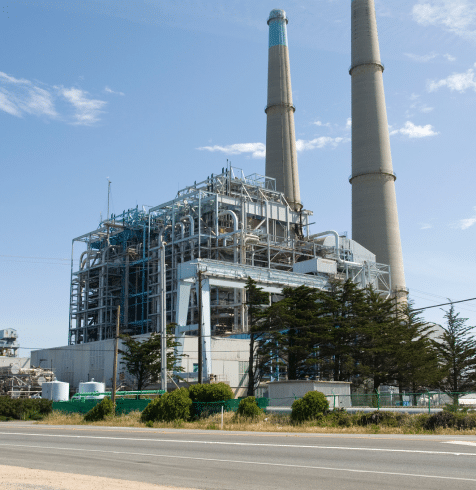Alabama Mesothelioma & Asbestos Lawyer
The Alabama economy has historically relied on manufacturing, oil refineries, shipyards, and chemical processing. These industries have used asbestos extensively and often required workers to handle it directly without protection. If you or your loved one has been diagnosed with mesothelioma, contact an Alabama mesothelioma lawyer to learn how you could recover substantial compensation.
Home » National Mesothelioma Law Firm » Alabama Mesothelioma Lawyer

Legally Reviewed By: Megan Waida
Senior Attorney | Mesothelioma & Asbestos
- Page Last Updated:
- December 4, 2024

Legally Reviewed By: Megan Waida
Senior Attorney | Mesothelioma & Asbestos
- Page Last Updated:
- December 4, 2024
Why Should You Choose the Lanier Law Firm to Handle Your Mesothelioma Claim?
Alabama Industries with Historic Asbestos Exposure
Alabama Companies with a History of Exposing Workers to Asbestos
You May Be Eligible to Pursue Substantial Mesothelioma Compensation
What Should You Do If You Have Been Diagnosed with Mesothelioma in Alabama?
How Can an Alabama Mesothelioma Attorney at the Lanier Law Firm Help?
Mesothelioma is a latent disease that develops 10 to 60 years after asbestos exposure. Some people develop asbestosis or lung cancer in addition to or instead of mesothelioma. These conditions also take years or decades to develop.
Although asbestos was primarily used during the 1900s, Alabama workers still feel the effects today. According to the Centers for Disease Control & Prevention, 189 Alabamians were diagnosed with mesothelioma from 2016 to 2020, and 144 died.
Asbestos companies knew asbestos was dangerous, but instead of warning workers and the public, they took advantage of the mesothelioma latency period and actively concealed the dangers. This cover-up was made easier because workers who inhale or ingest asbestos typically do not experience any symptoms or warning signs of exposure.
If you have received a mesothelioma cancer diagnosis or lost a loved one to the disease, you know how devastating this illness is and how wrong these businesses were to keep this information hidden from the public. Our Alabama mesothelioma lawyers can help you hold them accountable.
Why Should You Choose the Lanier Law Firm to Handle Your Mesothelioma Claim?
When choosing a mesothelioma law firm, you need a team of attorneys with specific experience handling mesothelioma cases and standing up to large corporations. Asbestos companies often refuse to take responsibility for the harm they have caused, and standing up to them requires the assistance of skillful, determined trial lawyers.
Our award-winning Alabama mesothelioma attorneys have been helping mesothelioma patients recover substantial compensation for more than 30 years, and the skills and effectiveness of our attorneys are unparalleled in the legal field.
We are well-known nationwide for the life-changing recoveries we win for our clients. Our peers in the legal community regard our lawyers as among the top lawyers in the nation. Our awards and recognitions include such prestigious honors as the following:
- Super Lawyers
- Best Lawyers in America
- Most Feared Plaintiffs Law Firms
- Most Impressive Plaintiff Verdicts
- U.S. News Best Law Firms, Tier 1 Rating
Asbestos companies and their insurance companies also know who we are, and they are more likely to offer our clients the settlements they deserve because they do not want to face us in court.
Our Consistent Record of Successful Results
The most important measure of a law firm’s effectiveness is its track record of results. We consistently achieve outstanding settlements and verdicts for our clients.
In a historic case, our law firm won a $115 million jury verdict against The Carborundum Company on behalf of 21 steelworkers who worked at U.S. Steel in Birmingham. This verdict included $100 million in punitive damages.
In this case, the Carborundum Company had manufactured an asbestos-tainted grinding wheel that released asbestos while our clients’ faces were within inches of it. It is the first jury award against a grinding wheel manufacturer.
Our Alabama mesothelioma lawyers have also achieved the following results while representing individual mesothelioma plaintiffs:
- $1.3 million recovery for a laborer and welder who worked at various Alabama job sites
- $1.1 million recovery for an Alabama shipyard tile setter
- $1.116 million recovery for an Alabama veteran who was exposed to asbestos while serving our country at multiple Alabama military installations and later while working at various Alabama sites as an electrician
Client Testimonials
The Lanier Law firm has been such a blessing for our family. My mother passed away from mesothelioma. The many settlements my father received allowed him to live comfortably until he passed away at 95. The Lanier law firm was very professional and always answered our questions promptly. I am very grateful for all of their guidance. I would recommend using their services if one of your loved ones is in this same situation.
– Nancy Katkowski
I lost my husband to Mesothelioma. The Lanier Law Firm was there for me from the moment my husband passed. Their kindness and support during this difficult time of my life helped me to deal with all the issues going on in my life. They were my only friends, and I am glad they were they to support me.
– Debra Doyle
My mother, my two sisters, and myself have benefitted, and continue to benefit, greatly from Lanier Law Firm’s tenacious quest to seek justice from negligent entities responsible for my father’s illness and untimely death from mesothelioma.
– Mike Mooney
Our Featured Lawyers

Mark Lanier
Mark Lanier is one of the world’s most accomplished mesothelioma lawyers who has been recognized by many prestigious organizations, including the New York Times, as one of the top civil trial lawyers in the nation. He founded the Lanier Law Firm in 1990 and has won over $20 billion in compensation for injured clients.
His legal skills in and out of the courtroom are unmatched, and he is often called upon to serve as the following:
- A guest commentator on major news networks
- A featured speaker at the nation’s most prestigious law schools
- A teacher and mentor of other lawyers
In 2015, the American Association of Justice awarded him the Lifetime Achievement Award. He was named Trial Lawyer of the Year by the National Trial Lawyers and The Trial Lawyer Magazine for two years in a row in 2016 and 2017. His success in the legal field has also earned him honorary doctorate degrees from St. Johns University and Pepperdine University.
His other prestigious designations include the following:
- Legal 500 Hall of Fame
- America’s Top 100 Attorneys
- Lawdragon’s 500 Leading Lawyers
- Leading Lawyers in Plaintiffs’ Dispute Resolution
- Elite Trial Lawyers
- National Trial Lawyers’ 50 Most Influential Lawyers in the U.S. in 2018
- Litigation Star by Benchmark Litigation
- AV Preeminent Rating for professional excellence and ethical standards

Megan Waida
Megan Waida is an experienced asbestos lawyer who has been with the Lanier Law Firm since 2012 after helping numerous asbestos clients at other prominent law firms. She is a member of the State Bar of Texas and the American Association for Justice.
Alabama Industries with Historic Asbestos Exposure
Alabama is home to nine naturally-occurring asbestos deposits in the northern part of the state near the Georgia border. These deposits were prospected but never commercially mined. Asbestos supplied to Alabama employers came from mining companies and manufacturers outside the state.
Occupational asbestos exposure is the most common source of exposure. Workers at the highest risk of developing mesothelioma are those exposed to high levels of asbestos daily over an extended period.
The following Alabama industries relied heavily on asbestos in everyday operations during the early to late 1900s:
- Shipyards
- Steel mills
- Oil refineries
- Chemical plants
- Paper mills
- Factories
- Power plants
- Military
- Government
Alabama Companies with a History of Exposing Workers to Asbestos
Asbestos exposure occurred in nearly every industry. Some of the key companies responsible for asbestos exposure are discussed below.
Shipyards
Alabama shipyard workers have been exposed to asbestos while working at the following shipyards:
- Alabama Drydock & Shipbuilding Company
- Newport News Shipbuilding and Drydock Company
Shipbuilders and repair workers faced a high risk of heavy asbestos exposure daily during the peak of asbestos use. Unfortunately, numerous ships built before 1980 remain in commission, and shipyard workers still face asbestos exposure while working on these ships.
Shipyard workers may be exposed to asbestos through the following ship components:
- Engine parts
- Brakes
- Pipe insulation
- Wallboard
- Boilers
- Insulation
- Coatings
- Adhesives
- Electrical wiring
- The hull
The entire hulls of most pre-1980 ships were lined with asbestos.
Factories
The largest factories in Alabama where workers were exposed to asbestos include the following:
- 3M Company – Manufacturer of multiple adhesives
- American Can Company – Aluminum manufacturer
- Cement Asbestos Products Company, also known as Capco Pipe
- Goodyear – A tire and rubber manufacturing company
- Koppers – Manufacturer of wood preservation products, including railroad ties
- Rock Wool Manufacturing Company
- Shook and Fletcher – An insulation manufacturer
Asbestos was present in building components and machinery in virtually every factory in Alabama during most of the 1900s.
Background Asbestos in Factories
Background asbestos is present even though workers do not directly handle it as a regular part of their jobs. In factories, asbestos was incorporated into the machinery used for production and in the buildings themselves in the following components:
- Machine gaskets
- Boilers
- Boiler insulation
- Plumbing pipes
- Building insulation
- Electrical wiring
- Floor tiles
- Ceiling tiles
- Structural steel
Asbestos encased in another material becomes hazardous when that material is breached, releasing asbestos into the environment where it can be inhaled and ingested. This can occur when a worker cuts or drills into the material or during normal wear over time.
Factories have numerous moving parts in production machinery, and asbestos was often used in wearable parts, such as gaskets and valves, which required regular maintenance. Millwrights and maintenance workers responsible for maintaining machinery experienced heavy exposure while performing routine tasks and repairs.
The asbestos used to insulate boilers, steel columns, and ceilings was often applied using a spray application, resulting in the asbestos taking on a form known as friable asbestos. This form of asbestos is often located in a visible area and is easily damaged by such minor forces as the following:
- Human touch
- Everyday vibrations from production machinery
- The wind of workers walking by
- Wear over time
Asbestos Used in Production
Factory workers often handled asbestos directly while manufacturing asbestos-containing products. Asbestos was often incorporated into such products as the following:
- Textiles
- Adhesives
- Paint and other coatings
- Cement products
- Railroad ties
- Wood preservatives
Asbestos was added to these products to increase fire resistance, add strength, and increase the products’ longevity. Unfortunately, the same qualities of asbestos that made it useful for products made it harmful to the long-term health of factory workers.
Paper Mills
Like other factories, paper mills used asbestos in the machinery, insulation, and building components. Paper mill workers handled asbestos directly while manufacturing pulp and paper products.
Paper mills in Alabama that manufactured asbestos-containing paper products include the following:
- American Can Paper Mill
- Kimberly-Clark
- Gulf States Paper
- International Paper Company
- James River Paper
- Union Camp
- West Point Papermill
According to the American Journal of Industrial Medicine, maintenance workers, and mechanics had the highest risk of asbestos exposure because the material was more likely to be present in machinery parts that required regular maintenance than in the paper dust found throughout the factory.
However, asbestos paper was used in numerous products produced by paper mills, and the papermill workers who produced these products experienced high levels of asbestos exposure daily. These products include the following:
- Roll board
- Millboard
- Asbestos corrugated paper used as insulation around pipes and ductwork
- Asbestos felt used in roofing and flooring
- Asbestos paper used in brake linings and gaskets
Raw asbestos is added to pulp and woven into paper products during production. Additionally, the finished asbestos-containing paper products were cut to size before being packaged for sale, releasing asbestos into the environment again.
Chemical Plants
Chemical plants use asbestos in machinery, building components, and insulation, similar to factories. It was also used in chemical production because of its chemical non-reactivity.
Alabama chemical plants with a history of using asbestos include the following:
- Newport Chemical
- Newport Industries
- Reichold Chemical
- Shell Chemical
- Stauffer Chemical Company
- Union Carbide, a wholly-owned subsidiary of the Dow Chemical Company
- The Olin Corporation
The Olin Corporation
The Olin Corporation on the outskirts of McIntosh is a major producer of the nation’s chlorine. It is one of the last plants in the Chlor-Alkali industry to use asbestos diaphragms in chlorine production. Asbestos diaphragms are used to prevent chemicals from mixing.
The Occupational Health and Safety Administration imposes strict asbestos safety regulations in the workplace, which require workers to keep asbestos contained so it does not become airborne and contaminate clothing, which would cause the fibers to be carried throughout the workplace and even to the worker’s home, resulting in secondary asbestos exposure.
According to a 2022 ProPublica report, the McIntosh Olin factory has violated OSHA safety standards to an extreme degree. Olin employees told ProPublica that they have witnessed such infractions as the following:
- Visible asbestos dust throughout the plant
- Requiring a long-time janitor to perform such tasks as scraping dry asbestos off the floor and throwing away protective suits “caked with asbestos” without being advised of its dangers or offered protective gear
- Failing to provide safety training and protective equipment to workers regularly exposed to asbestos, including millwrights, pipefitters, electricians, and maintenance workers
Factory supervisors told workers to keep the asbestos wet to prevent dust. However, it dries too quickly, according to the workers. Even if the asbestos did remain wet, this alone is insufficient to protect workers in the presence of asbestos, according to asbestos abatement guidelines set by the EPA and the Alabama Department of Environmental Management.
Fortunately, according to the ProPublica report, the Olin Factory plans to stop using asbestos diaphragms. While this is good news, it is too late for many workers who have already experienced extensive asbestos exposure over an extended period.
Steel Mills
Steel mill workers have experienced heavy asbestos exposure from handling it directly and using asbestos-tainted machinery. When asbestos was still in widespread use, steel mill workers regularly sprayed it onto steel columns to increase their strength and fire resistance.
This type of asbestos, known as friable, and its overspray likely exposed these workers to significant asbestos levels. Steelworkers also used grinding wheels and machinery laden with asbestos. The steel mills in Alabama with an established history of asbestos exposure include the following:
- Republic Steel
- U.S. Steel Corporation plants in Birmingham, Ensley, Fairfield, and Irondale
A 1990 study published by the Archives of Environmental Health found that the asbestos fibers steelworkers inhaled were mostly amphibole asbestos fibers.
Asbestos occurs in two families: serpentine and amphibole. Chrysotile asbestos is the only asbestiform in the serpentine family. It is the most common type of asbestos used commercially. It tends to occur in long, curved strands. Amphibole asbestos is smaller and more needle-like. It is considered the more dangerous type.
OSHA cited Pennsylvania-based U.S. Steel as recently as 2016 for exposing workers to asbestos at the company’s Pittsburgh coke production facility. OSHA imposed a fine of $170,000. This was the second time since 2011 that the company has been cited, according to the agency.
Power Plants
Power plant workers are exposed to asbestos through electrical wiring insulation, boilers, pipes, turbines, and building components. Asbestos exposure is most common in older power plants. In Alabama, power plants that may have exposed workers to asbestos include the following:
- Alabama Power Company
- Bellefonte Nuclear Plant
- Widows Creek Power Plant
- The James H. Miller, Jr. Power Plant in Jefferson County
The James H. Miller, Jr. Power Plant is jointly owned by the Alabama Power Company and PowerSouth Energy Cooperative. It is a coal-fired and steam turbine power plant. Babcock and Wilcox, a known asbestos company, supplied steam boilers to this facility.

Oil Refineries
Crude oil is highly combustible, and asbestos was used in oil refineries because of its heat and fire resistance. The following oil refineries in Alabama exposed workers to asbestos:
- Coastal Mobile Refinery
- Colbert Steam Plant
Oil refinery workers with the highest risks of asbestos exposure include the following:
- Engineers
- Control panel operators
- Pump operators
- Boiler workers
- Millwrights
- Pipefitters
- Welders
- Ironworkers
- Electricians
Military Bases
The Fort McClellan army base in Anniston was decommissioned in 1999 due to widespread toxic exposure. Although asbestos was not specifically cited, it was present, and army barracks are well-known for rampant asbestos exposure. Asbestos could be found in virtually all components of army barracks, from the ceiling down to the floor, including the following:
- Building insulation
- Pipe wrapping
- Plumbing valves
- Floor tiles
- Ductwork wrapping
- Electrical wiring
- Heating units
- Drywall
- Plaster
- Paint
- Roof shingles
Government
Older government buildings were known to contain asbestos due to the material’s fire resistance and insulating qualities. Asbestos could be found in nearly every aspect of the building, including the ceilings, walls, and floors. Asbestos has been identified in government buildings in Mobile and at NASA’s Marshall Space Flight Center in Huntsville, which was abated on a large scale in 2016.
Most of the asbestos at the NASA complex was found on piping and ductwork, according to asbestos abatement company Ampibar Response. NASA’s buildings were constructed in the 1960s using asbestos-coated steel. In October 2022, the Von Braun headquarters building 4200 at the Marshall Space Flight Center was demolished, according to Advance Local.
Vermiculite Processing
Vermiculite is a natural mineral that can be expanded into lightweight particles through an intense heating process known as exfoliation. The exfoliation process disturbed the asbestos, which exposed workers. Exfoliated vermiculite was commonly used as a soil conditioner and loose-fill insulation.
During most of the 1900s until as late as 1990, most of the world’s vermiculite came from a mine in Libby, Montana. While vermiculite is not typically a harmful product, Libby vermiculite was severely contaminated with tremolite, an amphibole form of asbestos. The company that owned this mine was W.R. Grace.
Libby vermiculite was processed in exfoliation facilities throughout the world. One such facility was located at 2800 5th Avenue South in Birmingham. According to the Government Accountability Office, the EPA compiled a database using W.R. Grace shipping invoices and determined that the Birmingham exfoliation plant received 200 tons of Libby vermiculite.
You May Be Eligible to Pursue Substantial Mesothelioma Compensation
If you or your loved one has been diagnosed with mesothelioma or another asbestos-related illness, you may have grounds to file a mesothelioma lawsuit as well as other mesothelioma claims against the companies responsible for your asbestos exposure.
The types of mesothelioma compensation you may recover depend on the circumstances of your asbestos exposure.
Mesothelioma Lawsuit
In an Alabama mesothelioma lawsuit, you may be able to recover the following types of compensation:
- Economic damages – Compensation for monetary losses, including past and future lost wages, past and future medical expenses, and personal care services
- Non-economic damages – Compensation for pain and suffering
- Punitive damages – Damages awarded to punish the defendant
Economic and non-economic damages are known as compensatory damages because they are awarded to compensate for losses. Punitive damages are known as non-compensatory damages because they are awarded for a different purpose.
While there are no limits on the economic and non-economic damages you can receive, the Alabama statutes limit punitive damages to three times the total compensatory damages or $1.5 million, whichever is greater.
Under Alabama law, punitive damages are only available when you can prove the defendant “consciously or deliberately engaged in oppression, fraud, wantonness, or malice.”
You may be able to sue large companies that supplied asbestos to your employer. Many of these companies engaged in an active coverup of the dangers of asbestos, which may make your case eligible for punitive damages.
Wrongful Death Lawsuits in Alabama
If your beloved family member has tragically passed away from an asbestos-related illness, you may be able to recover compensation through a wrongful death lawsuit. In most states, you can pursue economic, non-economic, and punitive damages in wrongful death cases.
Alabama is unique because punitive damages are the only type available in wrongful death cases. The punitive damages limit does not apply to wrongful death cases. The purpose of punitive damages in wrongful death cases is to punish the defendant for causing the death.

Is There a Time Limit on Mesothelioma Lawsuits?
Like all other states, Alabama imposes a strict deadline for filing lawsuits, known as the statute of limitations. If you do not file your lawsuit before this deadline, you forfeit your right to recover the compensation you need and deserve.
The statute of limitations for mesothelioma in Alabama is generally two years from the date the injury occurred. For cases in which the last exposure was on or after May 19, 1979, the diagnosis date is considered the date of injury.
This is known as the discovery rule because it is the date you discovered the injury. The discovery rule does not apply in Alabama when the last exposure occurred before May 19, 1979. In these cases, the statute of limitations has already expired.
However, our law firm has successfully moved cases to other jurisdictions with more favorable time limits. Contact us immediately if you have recently been diagnosed with mesothelioma and your last exposure was before May 19, 1979. We may still be able to help.
In wrongful death cases, the Alabama statute of limitations is generally two years after the date of the death.
It is important that you contact us as soon as possible after your diagnosis, no matter when your last exposure occurred. This will ensure our thorough and dedicated Alabama mesothelioma attorneys have sufficient time to build the strongest case possible and maximize your compensation.
Asbestos Trust Fund Claims
After the public became aware that asbestos caused deadly illnesses, injured workers began suing the responsible companies. The number of workers harmed by asbestos exposure was so significant that many asbestos companies became overwhelmed with their liabilities. As a result, they sought bankruptcy protection.
Section 524(g) of the Chapter 11 Bankruptcy Code requires asbestos companies to establish asbestos trust funds as part of their reorganization. People who have developed asbestos-related illnesses can file trust fund claims with the respective trust funds.
Asbestos trust funds provide a faster means of recovering compensation. However, the awards are generally smaller than the amount you can obtain in a lawsuit. Our clients often pursue both types of claims.
Are Any Alabama Companies Bankrupt?
The following Alabama Companies have filed for bankruptcy and established trust funds:
- Rock Wool Manufacturing Company
- Shook and Fletcher
In addition, the below companies that supplied asbestos-tainted products to Alabama companies have filed for bankruptcy and established asbestos trust funds:
- W.R. Grace, the owner of the asbestos-contaminated vermiculite mine in Libby, Montana
- Babcock and Wilcox, which provided steam boilers to at least one Alabama power plant
Asbestos Workers’ Compensation Claims
If you were exposed to asbestos at work, you may qualify for workers’ compensation benefits through the employer. This would be in addition to any lawsuit or trust fund claims against the companies that supplied asbestos to your employer.
Alabama workers’ compensation benefits include the following:
- Wage replacement of two-thirds of your average weekly wages before your diagnosis if you were still working when diagnosed
- Free medical care for your asbestos-related illness, whether or not you were still working when you were diagnosed
- Weekly death benefits of up to two-thirds of a deceased family member’s average weekly wages, if the family member was still working at the time of the diagnosis and you are a dependent
- Up to $6,500 in burial benefits for the deceased worker
If you or your family member was exposed to asbestos through more than one employer, the last employer is generally responsible for workers’ compensation benefits under Alabama law.
If workers’ compensation covers you, you cannot sue the employer. However, you may not be covered if you were an independent contractor. In that case, you can generally sue the employer and the asbestos suppliers.
You must file a workers’ compensation claim within two years of your diagnosis.
VA Claims
If you were exposed to asbestos while serving in the military and developed mesothelioma or another asbestos-related illness, you may be eligible to receive monthly disability benefits and free medical care through the Department of Veterans Affairs.
You can file a VA claim using the most convenient method, including online, by mail, by telephone, or in person at the Montgomery Regional Office. You can also enlist the free assistance of an accredited representative.
What Should You Do If You Have Been Diagnosed with Mesothelioma in Alabama?
A mesothelioma diagnosis requires immediate medical and legal action to ensure the best outcome for you and your family.
Promptly Seek Medical Treatment
If you have been diagnosed with mesothelioma, you must initiate treatment immediately. Mesothelioma is often diagnosed in the later stages because of its rarity and the challenges of obtaining a diagnosis. Early treatment could improve your prognosis.
It is important to choose a provider with experience treating mesothelioma. You can typically find these doctors at specialized mesothelioma treatment centers.
The O’Neal Comprehensive Cancer Center is the only comprehensive cancer center designated by the National Cancer Institute in the four-state region of Alabama, Mississippi, Louisiana, and Arkansas. It is a leading cancer research and treatment center, serving an estimated 5,000 new patients annually.
The Kirklin Clinic of the University of Alabama Hospital is an advanced cancer treatment program staffed by the same physicians who practice at the O’Neal Comprehensive Cancer Center in downtown Birmingham. This facility participates in clinical trials, which provide an opportunity to receive experimental treatments based on the latest mesothelioma research.

Contact an Alabama Mesothelioma Lawyer
It is crucial to contact us as soon as possible after your diagnosis so we can initiate your legal case. There are no upfront fees for our services, and our compassionate mesothelioma lawyers will travel to you, whether at your home or in a hospital.
How Can an Alabama Mesothelioma Attorney at the Lanier Law Firm Help?
If you have been diagnosed with mesothelioma, a large corporation may be responsible. Although the hard work of workers like you helped these companies amass their wealth, they often use their vast resources to fight against paying compensation.
Our law firm is passionate about holding large corporations accountable who think their vast resources give them immunity when they harm innocent individuals. When you retain the Lanier Law Firm, you benefit from our resources, skills, and experience.
We will take over all the details of your legal case and work in the background while you focus on treatment. We take the stress out of the process by doing the following:
- Traveling to you when a meeting is necessary
- Maintaining an open line of communication
- Advancing your case costs
- Filing your lawsuit on time
- Attending court on your behalf
- Fervently negotiating for the highest settlement available
We have a vast database of hazardous asbestos products, companies, and evidence, which we access to identify all your asbestos exposure sources and build a strong case. This is part of our commitment to pursue the maximum compensation available for you.
While our primary focus is the legal aspects of your case, we will also provide referrals to resources, support, and medical care as needed. We never charge fees for our services until we recover compensation for you. Until then, you owe us nothing.
While financial compensation cannot reverse a devastating diagnosis like mesothelioma, it can alleviate financial stress and provide security for you and your family. Don’t leave significant money on the table. Contact us today to schedule a free consultation.
By submitting this form, you agree to our terms & conditions. Please read the full disclaimer



